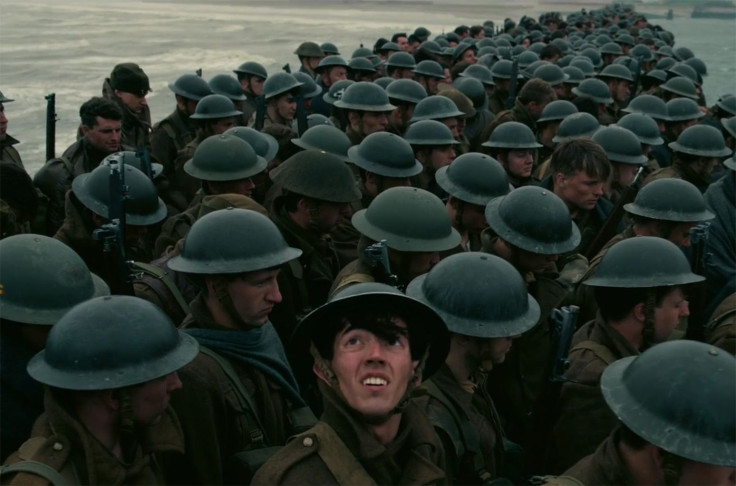Christopher Nolan’s Dunkirk is one of those films that’s so perfectly constructed and directed that after seeing it, I wonder, ‘Wait, why aren’t all war movies made this way?’ Dunkirk strips away all the hallmarks that directors have long assumed we need in a war film. Gone are the planning sessions, gone are the rousing speeches by the general, gone is the build up to the battle, gone is the old man staring at a grave presumably thinking about how much baby boomers love venerating the greatest generation. The film also eschews the narrative techniques famed by the revisionist war films of the ‘70s, namely following a single protagonist as they come to truly understand the horror and meaninglessness of war as seen in Apocalypse Now and Full Metal Jacket.
Instead, we follow a group of a few soldiers, and with incredible subjectivity, we live in their experience of the battle. We see nothing they do not see, although there are a few events we have the opportunity to see from a few different perspectives. This is thanks to the surprisingly unique yet interesting narrative structure of the film. The film is split into three stories: The Mole, The Sea, and The Air. The three fronts are all intercut throughout the film, but the kicker is that they don’t take place over the same amount of time.
The Mole, which follows the soldiers on the beach and the titular jetty from which their rescue ships dock, takes place over 1 week. The Sea, which follows one of the little ships of Dunkirk and the civilian crew on board, takes place over 1 day. The Air, which follows a few RAF pilots on a mission to protect the vulnerable ships, takes place during 1 hour. The stories are then intercut so they build together into a climax even though the events of one may have already played out in part from one of the other perspectives. Nolan has often played with chronology and structure in his films, most notably in Inception, and Interstellar. In those films, the attempts feel a bit self-indulgent and overly cheeky. In Dunkirk, it feels fresh and exciting while never pulling focus away from the events of the film itself.
Given the structure, the film has no real ‘protagonist.’ Instead we dip into the intense subjectivity of about two to three people in each section. We care about each of their stories and experiences and the film uses the mystery of their personal stories to help with the fact that we all know how the larger battle will end. This is carried through to a degree that most war movies never dare. In fact, when we get to Churchill’s ‘We Shall Fight On The Beaches’ Speech (the one big speech of the film, and one of the most famous speeches in history), it isn’t given to an actor playing Churchill, or even to the real man through a radio broadcast. Instead, it is read out of a newspaper by one of the soldiers we’ve been following.
This commitment to the perspective and subjectivity of our hero characters is very striking in a genre that expected to have cut-aways to the ‘big players.’ This approach also trickles down to the enemy itself. This is an enemy unseen by the common soldier at Dunkirk. They know the rifle fire, planes and torpedoes, but have little contact with the enemy. In turn, we barely see the German soldiers and it isn’t until the final shots of the film that they are seen and even then, only far away or out of focus. A choice that reminds me of Bresson’s A Man Escaped.
It is also worth noting the practical effects used in the film. In the age of CG, it is increasingly rare to have scenes with large numbers of extras and practical effects themselves are becoming increasingly rare. This film uses thousands of extras, real planes, real boats, including a few ships that were used in the evacuation of Dunkirk. The film has the best dogfights in a film since Top Gun, since both films use real planes – something I never thought I’d see again in the post CG world. The entire process makes us feel grounded in the moment in a way that is critical to the film’s success.
In my search for a similar war film, I had to go all way back to 1930 for All Quiet on the Western Front, another film that cared most about showing the struggle and situation of the common soldier against an unseen enemy. It remains to be seen if such a visually driven film will hold up at home, so it’s definitely worth catching now on the largest IMAX screen you can. If I had to have one quibble, it is that the French Army is barely mentioned, yet they were the ones primarily fighting the battle to ensure that any of the British could escape. This is minor. Go see Dunkirk.

















